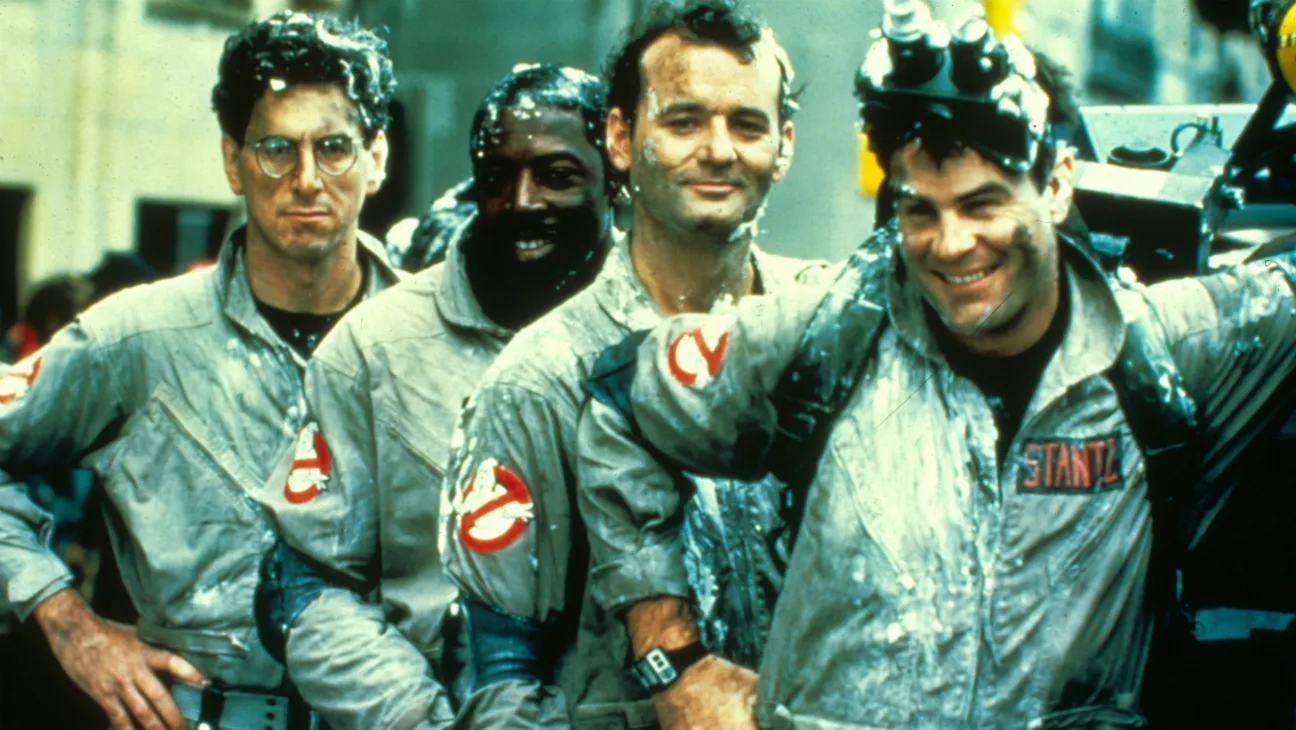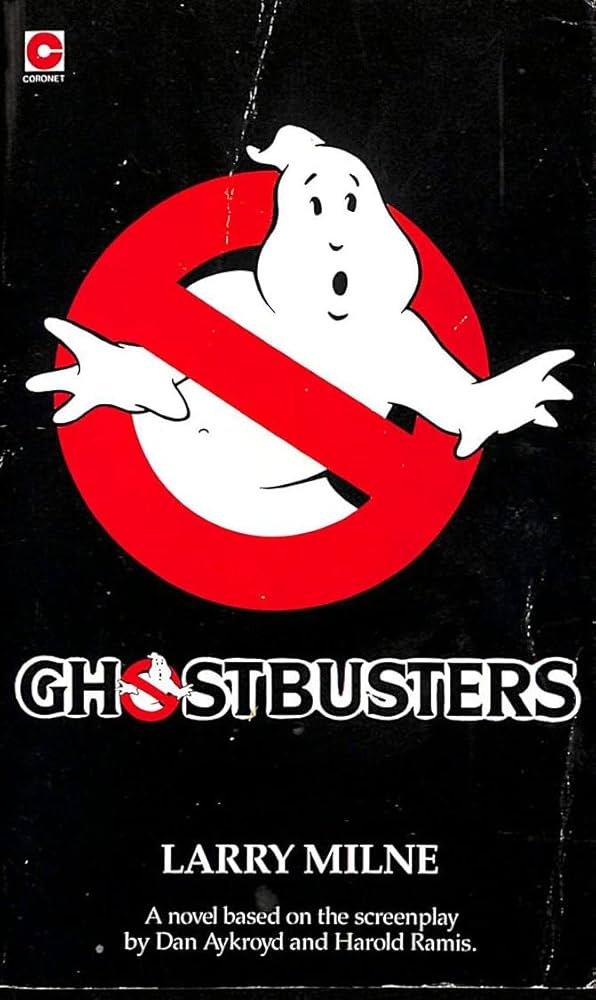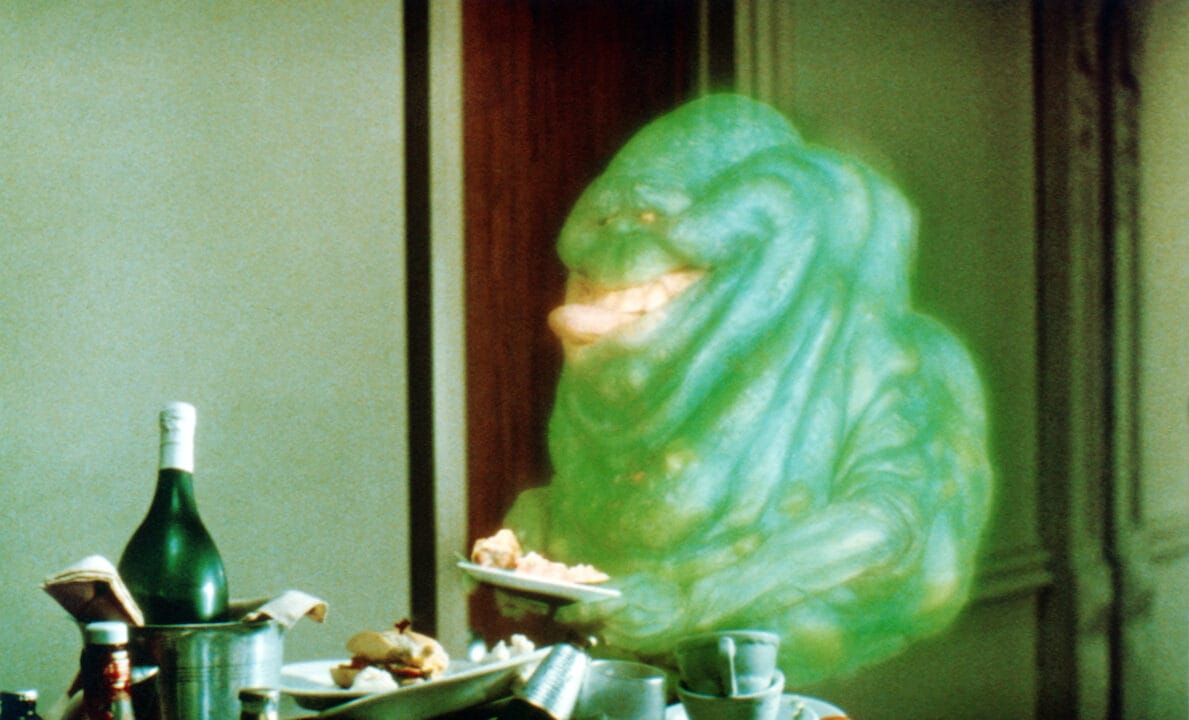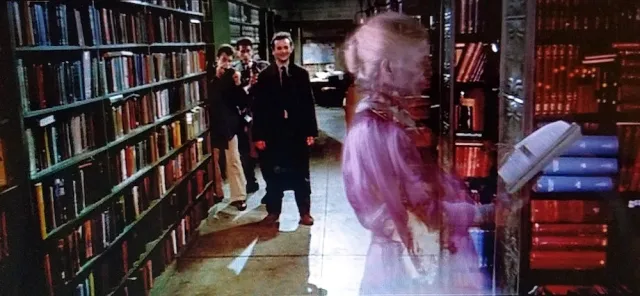Hollywood & Spine Archive: Transatlantic Bustin'
An overview to two novelizations of GHOSTBUSTERS, originally published in October 2019.

This is it: the last time I was ever happy writing about Ghostbusters! (originally published 10/15/2019)

Ghostbusters by Larry Milne (A novel based on the screenplay by Dan Aykroyd and Harold Ramis; Coronet Books (U.K.), 1984) and Ghostbusters: The Supernatural Spectacular by Richard Mueller (based on the motion picture written by Aykroyd and Ramis; TOR (U.S.), 1985)
The pitch: the high-concept comedy about a team of New Yorkers saving the city (and the world) from spooky threats from the beyond...as summarized by two different writers on two different continents!
The authors: Neither is exceptionally well known for prose and neither even has a bio in their books. Larry Milne has credits on two other novelizations (including the bizarre Bob Dylan flick Hearts of Fire), while Mueller parlayed his Ghostbusters gig into writing for animated television, starting with The Real Ghostbusters and continuing on Batman: The Animated Series, Mighty Max and more.
The lowdown: Let's get the big specter into containment from the start: Ghostbusters is a movie that's had a profound effect on my life and career. It is a touchstone of pop culture I've thought about often - maybe more often than I'd like - and reading two adaptations of it was a pretty good reminder of why I started this whole side project in the first place. Nerd culture is not without its issues, but at its heart, it's predicated on a genuine love for the quirky worlds created in genre entertainment and a desire to explore them further. Whether through novelizations and tie-ins or fan fiction, let alone countless reboots and remakes, we yearn for those details embedded in the extra stories, the better to understand the works as we do our own world.

Both books offer that extra perspective in their own ways. Each was published well after the film was released in June of 1984, with Milne's published the following November and Mueller's in the summer of 1985! By then, Ghostbusters was a bona fide success (the second-highest grossing movie of the year), though no spin-offs or sequels were yet announced. The books are structured identically, likely from the same shooting script that doesn't mirror the final film entirely. But what each author chooses to do with that raw material is decidedly different!
Milne's book has a zippy, unfussy prose (written in present tense, even) and focuses on telling an economic story without getting too bogged down in details. There are some exceptions: some good (Milne reflects a world with Ghostbusters in it by having the heroes sing Ray Parker Jr.'s immortal theme song), some weird (Ray Stantz (Dan Aykroyd)'s face is compared to a potato multiple times), and some terrible (nerdy neighbor Louis Tully (Rick Moranis), it's offhandedly noted, fantasizes about being raped by his neighbor Dana Barrett (Sigourney Weaver)). But by and large, this is the story, as the script tells it. And, it's worth noting, that script does a hell of a job, as anyone who knows of Aykroyd's hard sci-fi early treatments before the late, great Ramis added the lived-in characters and peppy dialogue. (Milne's version may actually have the advantage here over Mueller, who for whatever reason tones down all the profanity, leading to weird remixes of classics like "We came, we saw, we kicked its butt!" Shades of the TV version...)
But where Milne focuses on economy (telling the story in 167 pages, with room for some great original production notes), Mueller's 250-page tale luxuriates in details, from names (Scott Dickinson, the electroshocked nerd tortured by Venkman early on, and J.M. Shupp, the fussy concierge of the haunted Sedgewick Hotel) to referential color (GB secretary Janine devises the franchise's distinctive logo, Ghostbusters HQ gets a packet of fan mail from effects house Industrial Light and Magic!).
And any character development you didn't get in the film is yours to savor in Mueller's book. Learn how Ray Stantz's dysfunctional Long Island family (an older conservative brother and a younger hyper-liberal sister) was tested by loudmouth buster Peter Venkman (Bill Murray)'s antics (of course he tried to sleep with Ray's sister), leading his parents to bequeath him the family home ("as long as you've got friends like him, you're going to need all the help you can get") - you know, the one Ray is forced to triple-mortgage to start the Ghostbusters franchise. Marvel at stodgy Cleveland suburbanite Egon Spengler (Harold Ramis) learning to assimilate with humans, going from scientific-to-a-fault troublemaker (correcting the realtor's exact square footage of their firehouse base, apparently a script gag in both books) to something approaching human (complementing Janine's clavicles, another script-era joke in both adaptations). Feel little surprise as it's revealed Peter Venkman was raised on a traveling carnival and carries his father's barker spirit. (Pete's apparently very protective of this fact, blackmailing a newspaper with a visiting phantasm after they wrote an expose on him.) And enjoy Winston Zeddemore (Ernie Hudson) getting some bona fides as a member of the group, having served in the Air Force as a part of the Strategic Air Command, no less.

The cutting room floor: A handful of well-known (or at least previously released) Ghostbusters deleted scenes leave a mark in the novelizations. Most infamously, both books retain the Fort Detmerring sequence, where Ray and Winston (driving over the bridge the night Dana and Louis are possessed by Gozer's minions) investigate a call in which Ray has a, shall we say, close encounter with a female phantasm. (The scene was, of course, excerpted in an earlier montage in the film instead.) Also present in each book: a short scene in which Janine romantically gives Egon a lucky coin before the gang does battle with Gozer. (This was later featured in a post-credit scene in 2021's Ghostbusters: Afterlife.)
Unsurprisingly, Mueller's book includes a few extra scenes that were known to be filmed. Venkman and the slimy Dean Yeager have some extra repartee. There's the alternate intro to Slimer, unseen but interrupting a honeymooning couple at the Sedgewick. At various points, Louis Tully (both possessed and not yet possessed) spooks a pair of vagrants and a group of muggers in a Central Park tunnel</a>. Both were filmed, but the vagrants (played in the film by Murray and Aykroyd) appear throughout Mueller's novel, complete with names (Harlan Bojay and Robert Learned Coombes) and pithy observations throughout the text.
The last word: Mueller's book obviously has the advantage as an extended treat for hardcore fans, but one shouldn't count out Milne's approach on how to do a slick, no-frills novelization right.
